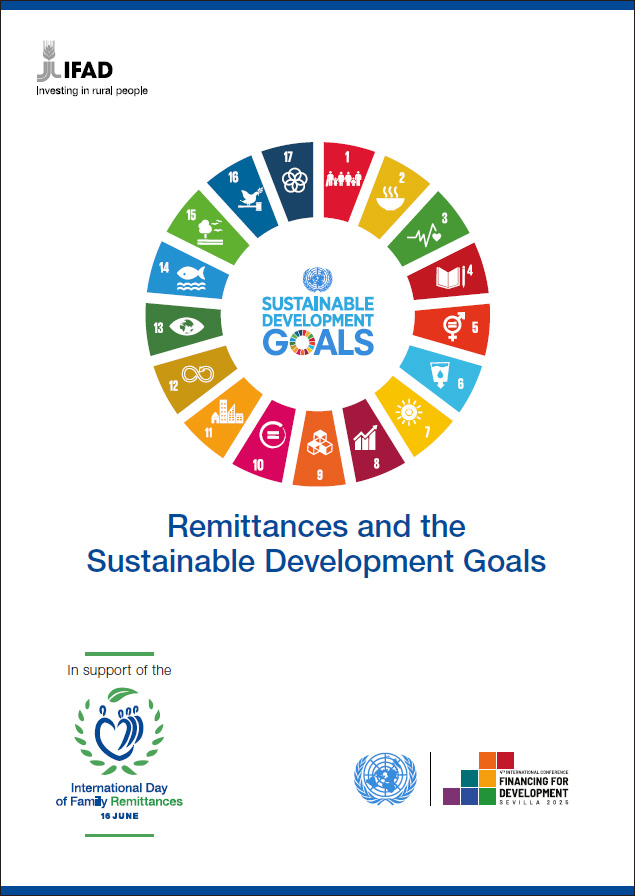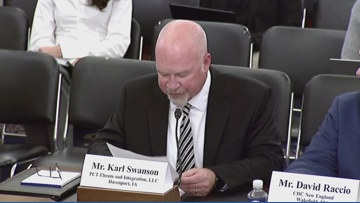Enhancing Public Spending Efficiency to Accelerate Sustainable Development Goals
Introduction: Fiscal Efficiency as a Catalyst for the 2030 Agenda
An analysis of Rwanda’s development over the past two decades demonstrates a strong correlation between efficient public spending and the advancement of the Sustainable Development Goals (SDGs). Despite modest increases in per-person spending, which remain below the sub-Saharan African average, Rwanda has achieved significant progress across multiple SDGs.
- SDG 3 (Good Health and Well-being): Life expectancy has increased by 20 years.
- SDG 4 (Quality Education): Nearly universal access to primary education has been achieved.
- SDG 6 (Clean Water and Sanitation): One in five citizens now has access to clean drinking water and sanitation services.
- SDG 7 (Affordable and Clean Energy): Over half the population has gained access to electricity.
This progress underscores that optimizing the use of existing taxpayer resources is a powerful strategy for achieving sustainable development, particularly in contexts of fiscal pressure from slow growth, rising debt, and increasing public demands.
Global Potential for SDG Advancement Through Smarter Spending
Findings from the Fiscal Monitor Analysis
A comprehensive analysis of 174 economies reveals a substantial “efficiency gap” in public spending. By adopting best practices in resource management and allocation, governments can unlock significant potential for growth and development, directly contributing to the achievement of key SDGs.
- On average, governments could gain one-third more value from their current spending levels.
- By improving spending efficiency, emerging markets and developing economies could increase long-term output by 11 percent, advancing SDG 8 (Decent Work and Economic Growth).
- Advanced economies could achieve a 4 percent increase in long-term output through similar measures.
Strategic Reallocation for SDG-Aligned Growth
Improving Allocative Efficiency for Targeted Development
Smarter public spending involves reallocating existing resources toward high-impact sectors that are foundational to the SDG framework. Current spending patterns in many countries show a decline in investment in these critical areas.
- Public Investment (SDG 9: Industry, Innovation and Infrastructure): Spending in this growth-enhancing area has declined by 2 percentage points of total expenditure over the past two decades.
- Education (SDG 4: Quality Education): Public spending on education has remained modest at approximately 11 percent of total expenditure.
- Public Wage Bills: In contrast, high public wage bills often account for a quarter of total expenditure, limiting fiscal space for development priorities.
Enhancing Technical Efficiency for Maximum Impact
Technical efficiency refers to maximizing development outcomes from a fixed level of public expenditure. The case of Canada’s education system exemplifies this principle in relation to SDG 4. Despite spending approximately $300 less per person on education than other advanced economies, Canada achieves the second-highest average years of schooling globally (13.7 years), demonstrating superior efficiency in converting financial inputs into educational outcomes.
Quantifiable Impacts on Economic Growth and Inequality
Long-Term Gains from Reallocating Public Expenditure
Strategic reallocation of public funds can generate substantial, long-term economic and social benefits, accelerating progress on multiple SDGs.
- Shifting 1 percent of GDP from lower-impact consumption to infrastructure investment boosts long-term output by approximately 1.5 percent in advanced economies and 3.5 percent in emerging economies, directly supporting SDG 8 and SDG 9.
- Redirecting the same amount toward human capital, such as upgrading education systems, can increase long-term output by 3 to 6 percent, respectively. This policy directly advances SDG 4 and SDG 8 while also contributing to SDG 10 (Reduced Inequalities).
These gains are amplified when combined with improvements in spending efficiency. A 10-percentage-point improvement in investment efficiency can further boost output gains by 1.4 percent.
Implementing Reforms for Sustainable Public Finance
Strengthening Governance to Enable SDG Progress (SDG 16)
Implementing spending reforms requires overcoming the challenge of “locked-in” expenditure, which accounts for about one-third of spending globally. However, best practices demonstrate that strategic reforms grounded in principles of good governance (SDG 16: Peace, Justice and Strong Institutions) can unlock significant efficiency gains.
- Strategic Fiscal Planning: Estonia and Sweden have successfully reduced budget rigidity by using multiyear fiscal planning and performance-based budget allocations.
- Anti-Corruption and Transparency: Combating corruption, strengthening the rule of law, and increasing budget transparency are critical for improving efficiency.
- Modernizing Public Financial Management: Togo increased its investment efficiency by 5 percentage points by introducing cost-benefit analyses and competitive procurement processes, supported by the digitalization of public finances.
- Sustainable Social Spending: Linking retirement ages to life expectancy and emphasizing preventative healthcare can ensure the long-term sustainability of programs related to SDG 1 (No Poverty) and SDG 3 (Good Health and Well-being).
- Systematic Spending Reviews: In the Slovak Republic, comprehensive spending reviews identified potential savings equivalent to 7 percent of public expenditure, freeing up resources for priority SDG investments.
Conclusion: A Pathway to Resilience and Sustainable Growth
By enhancing the efficiency of public spending and strategically reallocating existing resources, nations can strengthen public finances, build resilience against economic shocks, and accelerate progress toward achieving the Sustainable Development Goals. Smarter spending is not merely a fiscal tactic but a foundational strategy for long-term, inclusive, and sustainable growth.
SDGs Addressed or Connected to the Issues in the Article
-
SDG 3: Good Health and Well-being
The article directly connects efficient public spending to health outcomes. It highlights that in Rwanda, people “live 20 years longer” and mentions increased “health spending.” It also suggests policies like “emphasizing disease prevention to curb future health costs” as a way to ensure the long-term sustainability of social spending, which aligns with promoting well-being for all ages.
-
SDG 4: Quality Education
Education is a central theme. The article notes Rwanda’s achievement that “Nearly every household now has access to… primary education.” It further discusses education as a key area for public spending, pointing out that redirecting resources toward “human capital investment, for example by upgrading education systems,” can yield significant economic growth. The example of Canada achieving high educational outcomes (13.7 years of schooling) with relatively efficient spending reinforces this connection.
-
SDG 6: Clean Water and Sanitation
The article explicitly mentions Rwanda’s progress in this area, stating that “one in five has clean drinking water and sanitation services.” This directly addresses the core focus of SDG 6, which is to ensure the availability and sustainable management of water and sanitation for all.
-
SDG 7: Affordable and Clean Energy
Access to modern energy is cited as a key development gain in Rwanda, with the article stating that “More than half the population has electricity.” This progress is a direct contribution to the goal of ensuring universal access to affordable, reliable, and modern energy services.
-
SDG 8: Decent Work and Economic Growth
The article’s main argument is that “spending smarter is more than a fiscal tactic—it’s a growth strategy.” It quantifies how efficient public spending and reallocating resources can “increase output by 11 percent” in developing economies over the long term, directly addressing the goal of sustaining economic growth.
-
SDG 9: Industry, Innovation, and Infrastructure
The article strongly advocates for investment in infrastructure as a driver of growth. It states that shifting government spending “into infrastructure investment raises output by about 1.5 percent in advanced economies and 3.5 percent in emerging market and developing economies.” This aligns with the goal of building resilient infrastructure to support economic development.
-
SDG 10: Reduced Inequalities
The article explicitly links smart public spending to equity, noting that the “reallocation of spending can also reduce income inequality.” This directly addresses the aim of SDG 10 to reduce inequality within and among countries.
-
SDG 16: Peace, Justice, and Strong Institutions
The article emphasizes that improving the efficiency of public spending requires institutional reforms. It suggests “Combating corruption, strengthening the rule of law, and increasing budget transparency” as ways to increase efficiency. These recommendations are central to building effective, accountable, and inclusive institutions at all levels.
Specific Targets Identified
-
Target 3.8: Achieve universal health coverage
The article’s discussion of increased health spending per person in Rwanda and the resulting 20-year increase in life expectancy points toward progress on universal health coverage. The focus on disease prevention also supports strengthening health systems.
-
Target 4.1: Ensure that all girls and boys complete free, equitable and quality primary and secondary education
The statement that in Rwanda, “Nearly every household now has access to… primary education” directly relates to this target of ensuring universal access to primary schooling.
-
Target 6.1: Achieve universal and equitable access to safe and affordable drinking water for all
The article’s mention that “one in five has clean drinking water” in Rwanda is a direct reference to the progress and remaining gaps related to this target.
-
Target 6.2: Achieve access to adequate and equitable sanitation and hygiene for all
Similar to the point above, the reference to “sanitation services” for one in five Rwandans connects directly to this target.
-
Target 7.1: Ensure universal access to affordable, reliable and modern energy services
The statistic that “More than half the population has electricity” in Rwanda is a clear measure of progress toward this specific target.
-
Target 8.1: Sustain per capita economic growth
The entire article is framed around using efficient public spending as a “growth strategy” to “boost long-term growth” and “increase output,” which is the core of this target.
-
Target 9.1: Develop quality, reliable, sustainable and resilient infrastructure
The analysis highlights the high returns of shifting spending “into infrastructure investment” to boost output, directly aligning with the goal of developing infrastructure to support economic development.
-
Target 16.5: Substantially reduce corruption and bribery in all their forms
The article proposes “Combating corruption” as a key reform to increase the efficiency of public spending, which is a direct call to action for this target.
-
Target 16.6: Develop effective, accountable and transparent institutions at all levels
The recommendation to increase “budget transparency” and use “competitive procurement processes” are methods for developing more accountable and transparent public finance institutions, as called for in this target.
Indicators Mentioned or Implied
-
Indicator of Health (SDG 3)
The article provides a direct indicator of health outcomes by stating that Rwandans “live 20 years longer,” which implies a significant increase in life expectancy at birth. It also mentions “health spending from $150 to $420 per person,” an indicator of financial input into the health system.
-
Indicator of Education (SDG 4)
Two indicators are present:
- Access to primary education: The statement “Nearly every household now has access to… primary education” is a qualitative indicator of enrollment or completion rates (related to Indicator 4.1.1).
- Years of schooling: The article provides a specific quantitative indicator by noting that in Canada, “adults complete an average of 13.7 years of schooling.”
-
Indicator of Water and Sanitation Access (SDG 6)
The article provides a direct quantitative measure: “one in five has clean drinking water and sanitation services.” This serves as a proxy for Indicator 6.1.1 (Proportion of population using safely managed drinking water services) and Indicator 6.2.1 (Proportion of population using safely managed sanitation services).
-
Indicator of Energy Access (SDG 7)
A direct indicator is provided with the statistic that “More than half the population has electricity,” which corresponds to Indicator 7.1.1 (Proportion of population with access to electricity).
-
Indicator of Economic Growth (SDG 8)
The article uses percentage increases in economic output as a key indicator. For example, it states that efficient spending can “increase output by 11 percent” in developing economies and that shifting spending to infrastructure “raises output by about 1.5 percent.” This relates to the annual growth rate of real GDP per capita (Indicator 8.1.1).
-
Indicator of Institutional Quality (SDG 16)
While no specific numerical indicator is given, the article implies the use of indicators related to institutional quality by advocating for “Combating corruption, strengthening the rule of law, and increasing budget transparency.” Progress in these areas is often measured by indices like the Corruption Perceptions Index or public expenditure reviews.
Table of SDGs, Targets, and Indicators
| SDGs | Targets | Indicators Identified in the Article |
|---|---|---|
| SDG 3: Good Health and Well-being | 3.8: Achieve universal health coverage. | Increase in life expectancy (“live 20 years longer”); per capita health spending. |
| SDG 4: Quality Education | 4.1: Ensure all children complete free, equitable and quality primary education. | Access to primary education (“Nearly every household”); average years of schooling (“13.7 years”). |
| SDG 6: Clean Water and Sanitation | 6.1 & 6.2: Achieve universal access to safe drinking water and sanitation. | Proportion of population with access (“one in five has clean drinking water and sanitation services”). |
| SDG 7: Affordable and Clean Energy | 7.1: Ensure universal access to modern energy services. | Proportion of population with access to electricity (“More than half the population has electricity”). |
| SDG 8: Decent Work and Economic Growth | 8.1: Sustain per capita economic growth. | Percentage increase in economic output (“increase output by 11 percent”). |
| SDG 9: Industry, Innovation, and Infrastructure | 9.1: Develop quality, reliable, sustainable and resilient infrastructure. | Investment in infrastructure as a percentage of GDP (“shifting 1 percent of gross domestic product… into infrastructure investment”). |
| SDG 10: Reduced Inequalities | 10.1: Sustain income growth of the bottom 40 per cent. | Reduction in income inequality (mentioned as an outcome of spending reallocation). |
| SDG 16: Peace, Justice, and Strong Institutions | 16.5 & 16.6: Reduce corruption and develop effective, accountable institutions. | Implied indicators related to combating corruption, rule of law, and budget transparency. |
Source: imf.org







